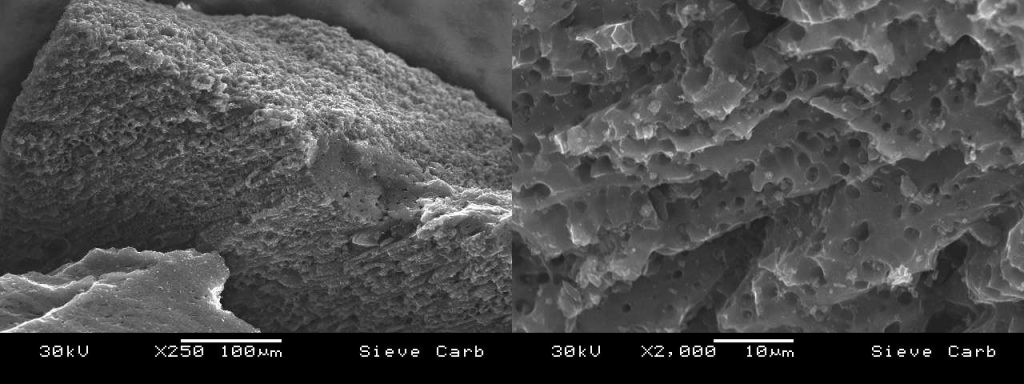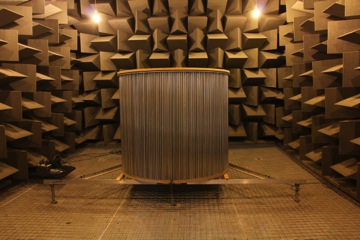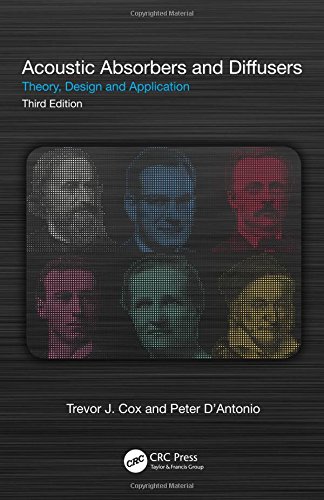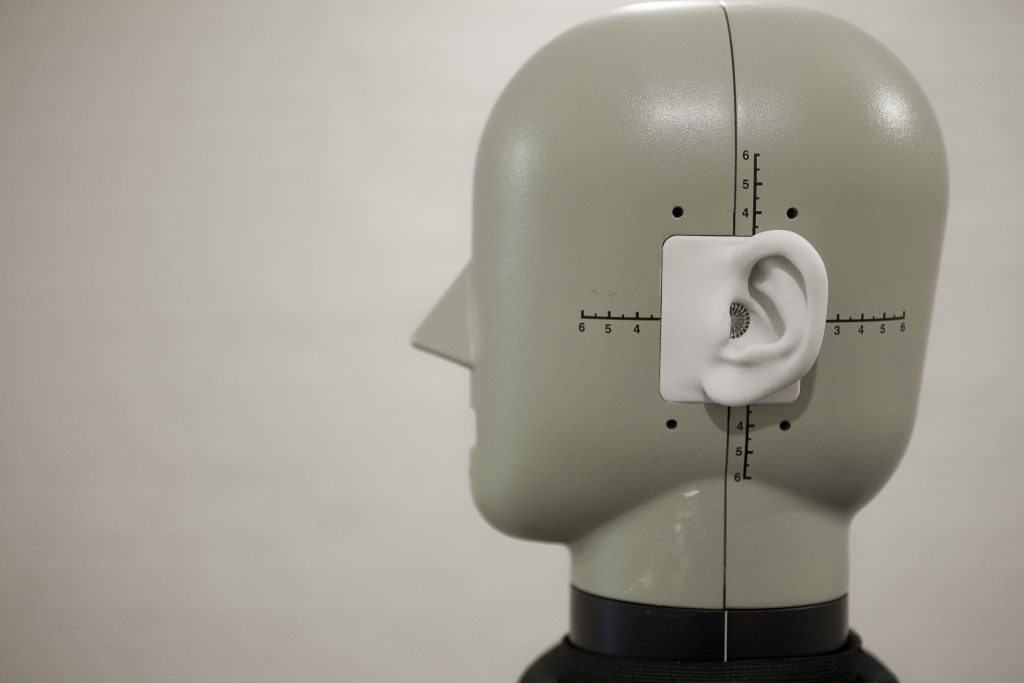Advanced Materials
Materials and structures for noise control and sound manipulation
Our research mainly concerns modelling, measuring and understanding sound interaction with porous materials, metamaterials and sonic crystals. We also carry out research on acoustic diffusers and materials for vibroacoustics. A key research driver is the need to improve acoustic performance with more sustainable materials.

Porous materials are renowned for their ability to attenuate sound. As sound wave penetrates the pores, the air oscillates and friction occurs due to its motion relative to the pore walls. It is difficult to know exactly what happens within the pores but research at Salford has led to major improvements in modelling of the acoustic properties of such materials. Behaviour of porous materials at high levels of acoustic excitation is of particular interest. Our novel work on multi-scale porous materials led to the spinout company Carbonair Ltd.
Metamaterials is a broad term for an artificial medium exhibiting properties not normally found in nature. Typically, a metamaterial consists of an artificial ‘atom’ or unit cell repeated in a pattern analogous to the way that conventional atoms occur in natural materials. Just as the microscopic properties of conventional atoms or molecules dictate the macroscopic behaviour of the medium consisting of them, in metamaterials the properties and arrangements of the unit cells determine what happens on a much larger scale when many unit cells are considered together in a large structure. The process of ‘zooming out’ and treating the discrete structure of atoms (natural or artificial) as a continuous medium is called homogenisation.
Metamaterials possessing interesting wave propagation characteristics are an actively researched topic, although it is fair to say that currently acoustic metamaterials are overshadowed by the greater counterpart, electromagnetic metamaterials, both in terms of depth of available research and potential applications. However, since the wave theories from these different areas of physics bear great similarity, many concepts in metamaterial research have cross-disciplinary overlaps, with many of the same properties related to the ability to guide waves in new ways being investigated.
The Salford team’s work has contributed to original modelling and measurements for omnidirectional absorber of low-frequency sound (acoustic black hole) and membrane structures. Current research activities focus on resonant acoustic metamaterials and superlensing. membrane structures and resonant metasurfaces. Our current activities are focused on nonlinear properties of resonant and graded metamaterials for attenuation of high amplitude sound.

Sonic crystals and granular chains take their name from the analogous effects of photonic crystals on light. They consist of periodic arrays of scatterers and are known to give low transmission in selective frequency bands as a consequence of multiple scattering. Salford’s team has developed theoretical approaches to modelling sonic crystal noise barriers made of resonant elements (elastic shells and coupled resonators).
Granular chains are 1D arrangements of spherical particles. They are highly nonlinear, meaning that their behaviour depends strongly on the amplitude of the signal. Salford’s team participated in investigation of nonlinear resonances in the granular chains, supporting coupled longitudinal, transverse and rotational motions.

The following gives just a few examples of projects involving materials and structures for noise control and sound manipulation
Porous materials
- Time domain modelling of sound attenuation in porous materials – linear and nonlinear acoustics
- Modelling of porous materials with multiple scales
- Porous absorption with dead-end pores
Metamaterials and metasurfaces
- Acoustic black hole
- Metasurface for perfect sound absorption
- Effective nonlocal boundary conditions for resonant metasurface
- Metamaterial absorber for high amplitude sound
- Metadiffuser
Sonic crystals and granular chains
Contact
Please contact Olga Umnova at o.umnova@salford.ac.uk.
